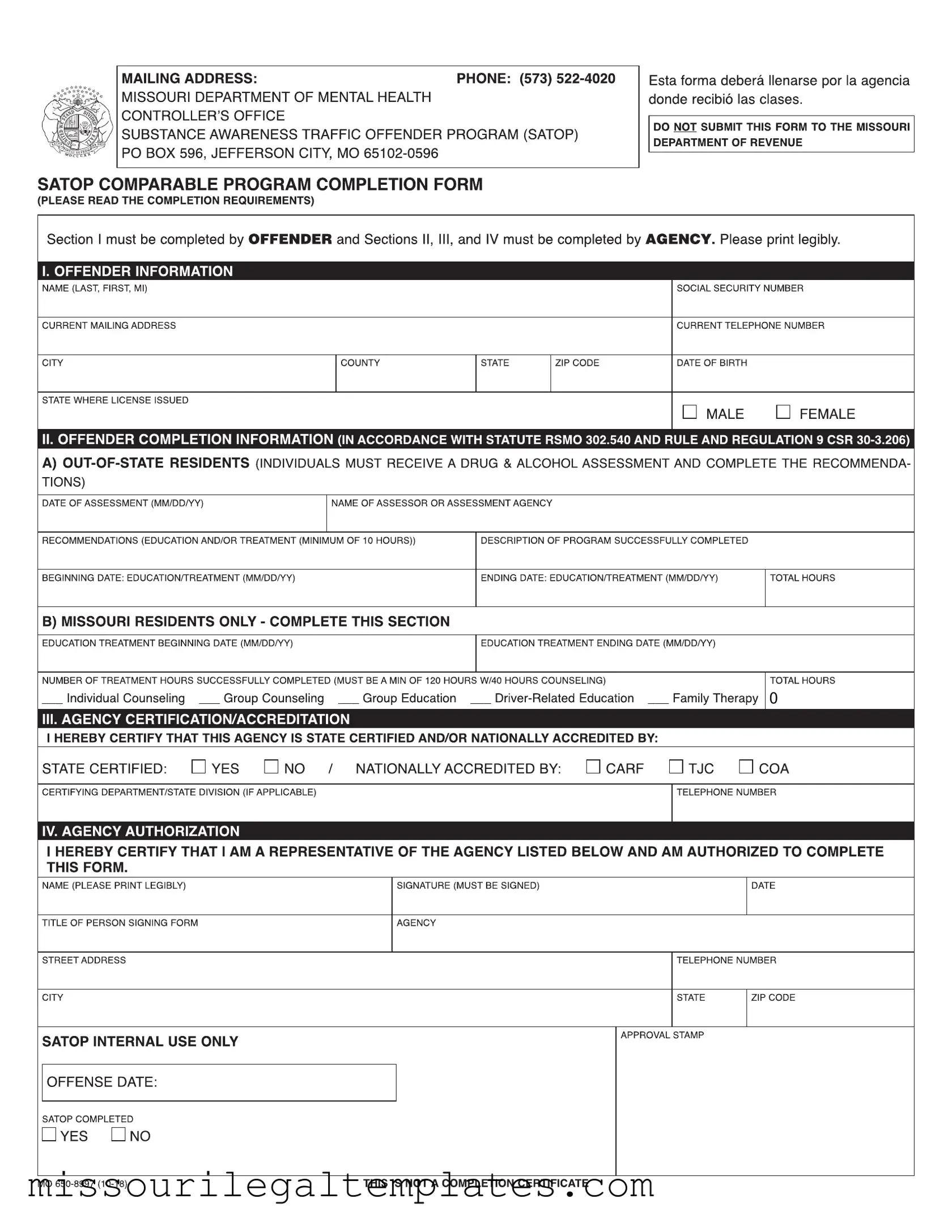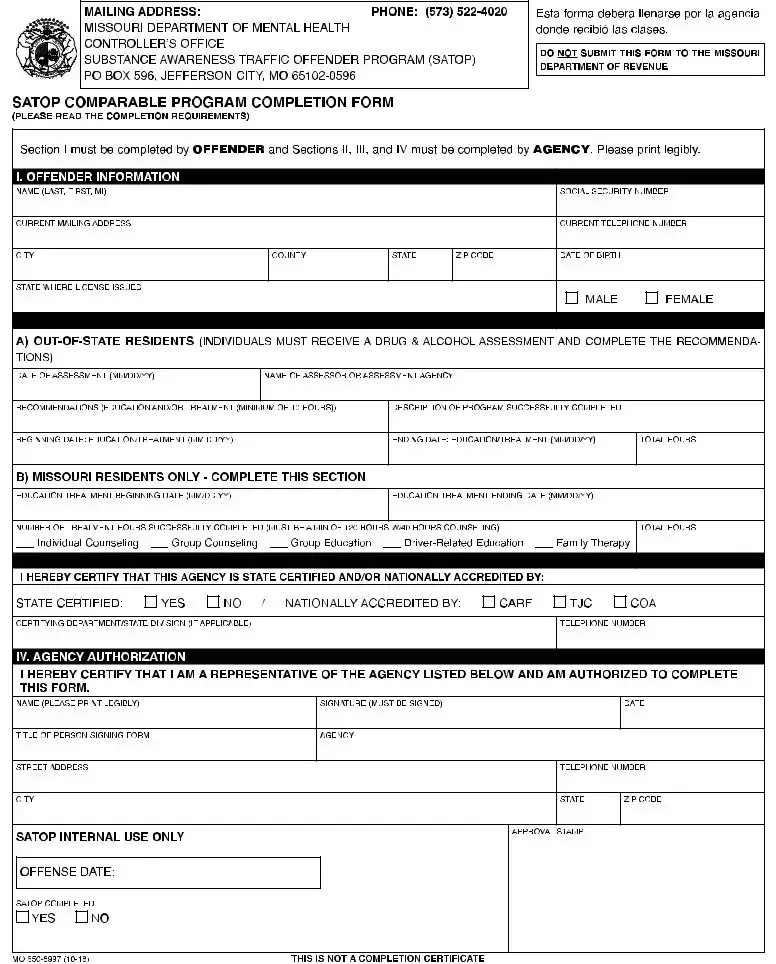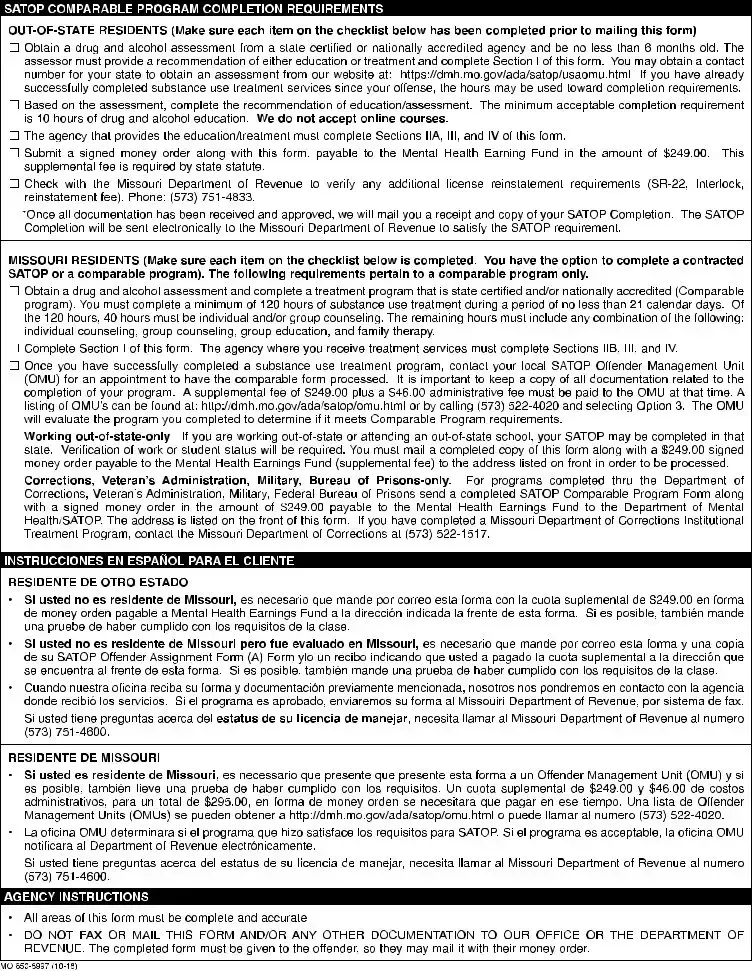The Missouri Substance Awareness Traffic Offender Program (SATOP) form plays a crucial role in helping individuals fulfill their obligations after being charged with substance-related offenses. This form is essential for both Missouri residents and out-of-state individuals who need to complete a drug and alcohol assessment, along with any recommended education or treatment programs. It consists of several sections, each designed to gather specific information. The first section requires the offender to provide personal details such as name, address, and social security number. Subsequent sections must be completed by an accredited agency, detailing the assessment results and confirming the completion of required education or treatment hours. For Missouri residents, a minimum of 120 hours of substance use treatment is required, while out-of-state residents must complete at least 10 hours of education. Additionally, the form includes a certification section for agencies to validate their accreditation status. The SATOP form must be submitted with a supplemental fee, ensuring that all necessary documentation is in order for processing. Understanding the requirements and accurately completing this form is vital for individuals seeking to regain their driving privileges and comply with state regulations.


